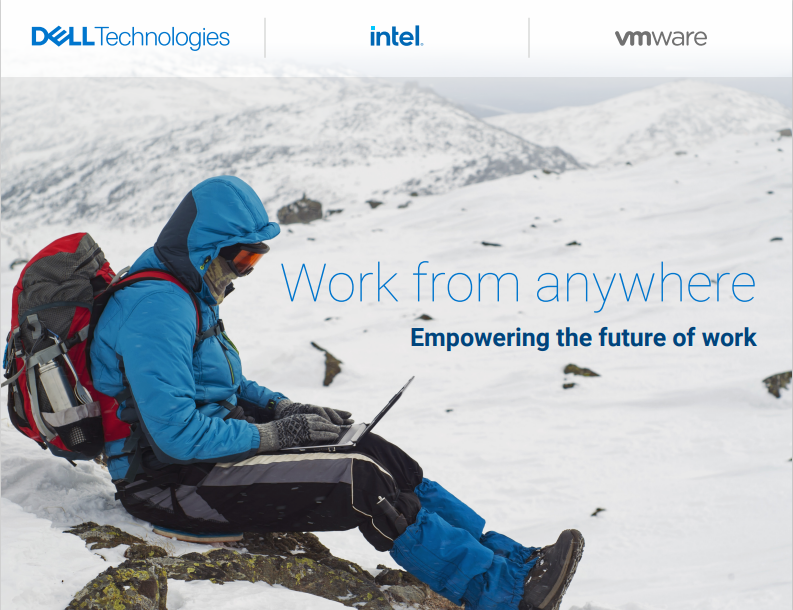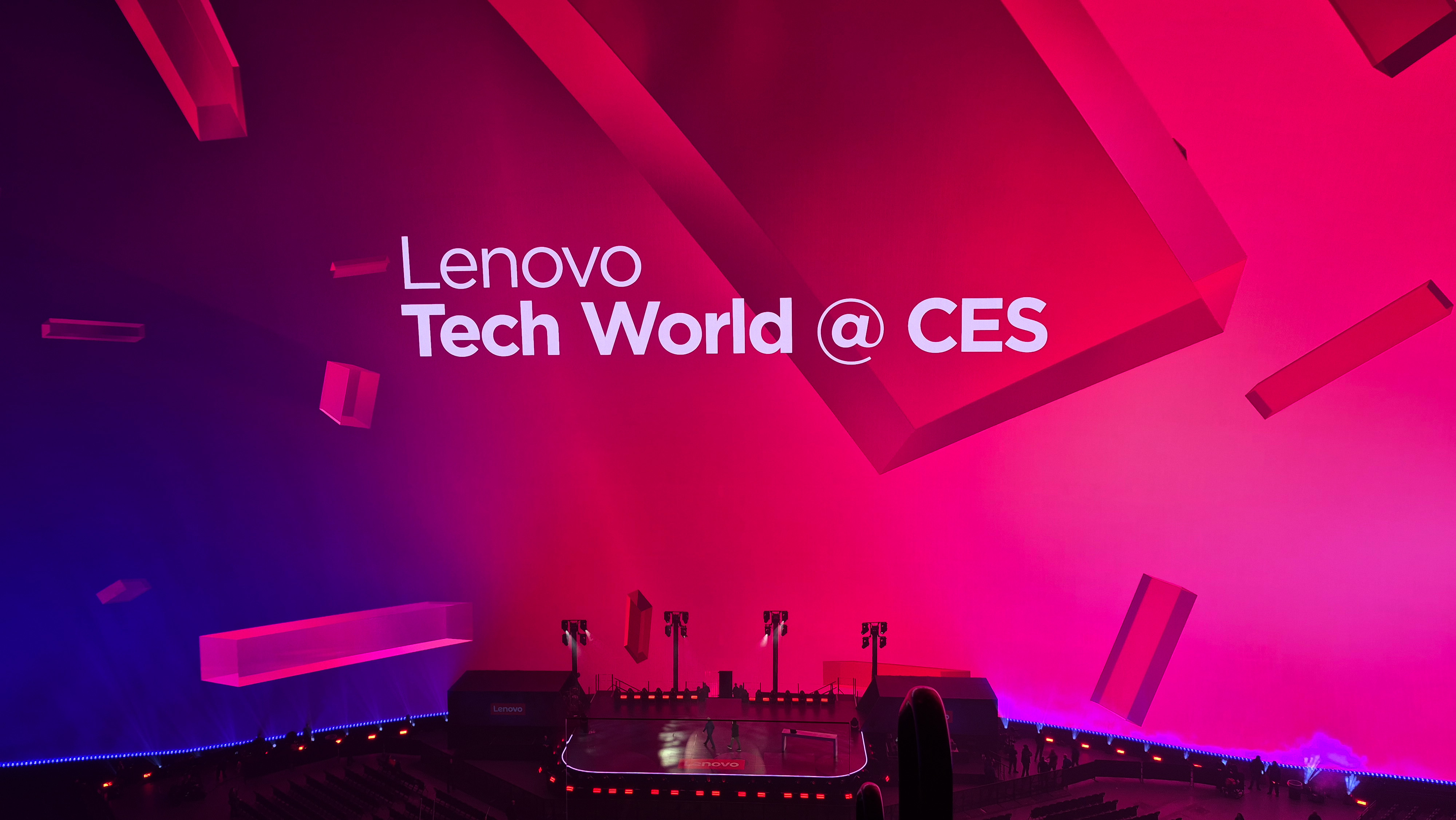Cisco claims it's solved 'broken' hybrid work model
Networking giant flexes muscles at Las Vegas with slate of product launches as it insists recent troubles are in the rearview mirror - our Cisco Live 2022 view from the airport


Rumours about Manchester being among the greyest and rainiest parts of the UK are true; it was made abundantly clear within days of moving here from London two-and-half years ago. Plop me in the middle of the beautifully warm desert and the bustling Las Vegas life, however, and you’ve got a perfect playbook to please a northern-based Brit.
It was my first time abroad since COVID-19 took hold and I’ve been itching to get back to in-person conferences since. Everyone from senior execs to delegates shared in this energy, with the community feel at Cisco Live 2022 shining through.
The networking giant put on a great show that felt as grand as ever, despite the reduced attendance. But a limitless supply of goodwill and upbeat energy couldn’t mask a handful of frailties, particularly given Cisco’s troubles during 2022 so far, as well as its muddled messaging around hybrid work. Although the industry giant made strides in terms of security and networking, sweeping claims it’s solved a list of issues with the new way of working were less convincing.
Cisco shows customers some love
One of the standout observations of Cisco Live 2022 was the company’s ingenious framing of its innovation strategy. Cisco threaded its key themes of unification, visibility, observability and simplification throughout the week’s programme as well as in its product launches and the approaches it highlighted.
This philosophy was put into action in the way it showcased how new cloud management products for Catalyst and Nexus switches bring greater visibility to enterprise networks, for example. Cisco also showed how a unified identity and access client can make both employees’ and IT teams’ lives easier.
IT departments can start benefiting from Cisco’s approach to innovation today, and the networking giant did a great job of showing it prioritised its customers’ needs. High praise indeed, given my oft-cynical outlook on such claims.
Cisco was clear that it believes businesses are facing an increasingly complex IT environment. Business-critical applications are all over the place, residing in different clouds and other areas, impacting the efficiency of IT teams. All of this is compounded by the rise of hybrid work. This, in turn, is adversely impacting the end-user experience too, and is why the company is embracing a platform approach to new products, which it believes will allow for better interoperability and happier IT teams generally.
Stay up to date with the latest Channel industry news and analysis with our twice-weekly newsletter
Cisco, ultimately, showed attendees it wants to make their lives easier, which went hand-in-hand with the gratitude CEO Chuck Robbins voiced to customers for sticking with the company over the past few years. This was a little more than a nod to its supply chain issues, that have had a knock-on effect on its financial performance.
Incidentally, there was little mention of the post-pandemic issues the company has been facing, but Cisco Live 2022 didn’t go without assurances that concerns are being taken care of. The firm even made light of its struggles at times, with Robbins and Ford CEO Jim Farley, for example, lamenting their shared supply chain issues while discussing a new partnership (more on that later).
Cisco’s silver-bullet solution to hybrid work woes
RELATED RESOURCE

Work from anywhere: Empowering the future of work
Employees want to work from anywhere, IT needs to be able to support this shift
A reduced audience capacity exemplified the theme of hybrid work, which the company says is here to stay. However, “hybrid work doesn’t work…yet” was the tagline of its second and final keynote address – which Cisco somewhat wasted – and was used to justify a slate of product launches the company feels will ‘solve’ the issues this model presents. These amount to a disconnect in meetings between office-based and remote workers, and issues with non-verbal communication in video conferencing setups.
Live virtual whiteboard software took care of the latter point, with office-based and remote workers collaborating on a shared document, all powered by Webex Desk hardware. Non-verbal communication was more interesting to me as a linguistics graduate who spent time studying it. The artificial intelligence (AI) tools coming to Webex that beam the faces of in-person attendees into individual windows during a video call, were impressive, but I failed to see how it’d genuinely replicate the social cues and body language signals that are often missing from hybrid meetings, despite Cisco’s best efforts to convince otherwise.
Among Cisco’s new units were also all-in-one specialist video conferencing stations of varying sizes – launches that one exec told me they believed to be original innovations, despite the fact I pointed out many already exist in the market. Some units were unique, granted, but I had to ask Cisco if I was misinterpreting these outlandish claims.
To my surprise, I misinterpreted nothing. Aruna Ravichandran, SVP and CMO at Webex by Cisco, told me that yes – Cisco does, in fact, believe it’s solved the hybrid work issues it identified with these launches as well as in-development augmented reality (AR) and hologram tech. Possibly an extension of the metaverse trend, the products allow people to take more meetings throughout their homes – which sounds awful – but there was some admittedly cool AI tech baked into the hardware, too.
Cisco’s partnership with Ford, meanwhile, involves shipping vehicles with Webex functionality as standard. I was told, and I kid you not, this wasn’t only so workers could take meetings in the car – which also sounds awful – but also for those times lots of employees are in the same car together, and need to be in the same meeting – which beyond being highly implausible, sounds awful again.
Cisco should have just led on the genuine innovations it’s bringing to the table, rather than make sweeping claims around ‘solving hybrid work’. There’s nothing wrong with trying to promote its latest products – just don’t frame it to be the silver bullet it most certainly isn't.
Cisco asks for a show of trust
In 2019, Cisco pushed the rather confusing message “you make possible”, which was printed on complimentary t-shirts and backpacks. Three years on, I still can’t get my head around what it means. Even a now-former member of Cisco’s US comms team mocked the strapline, at the time.
One pandemic later, Cisco’s messaging is still a little skew-whiff, but the overriding sentiment remains the same. The networking giant used Cisco Live 2022 to thank customers and imbue the impression its future is in safe hands, despite the turbulence of recent months.
I thought this approach was well executed, while its new security and networking products represented solid steps in the right direction. IT teams will be pleased with the additional capabilities coming into their hands, too, and leave with the promise that once that supply chain backlog clears, Cisco will be back to breaking earnings records once again.

Connor Jones has been at the forefront of global cyber security news coverage for the past few years, breaking developments on major stories such as LockBit’s ransomware attack on Royal Mail International, and many others. He has also made sporadic appearances on the ITPro Podcast discussing topics from home desk setups all the way to hacking systems using prosthetic limbs. He has a master’s degree in Magazine Journalism from the University of Sheffield, and has previously written for the likes of Red Bull Esports and UNILAD tech during his career that started in 2015.
-
 Businesses aren't laying off staff because of AI
Businesses aren't laying off staff because of AINews It's sexier to say AI caused redundancies than it is to admit the economy is bad or overhiring has happened
-
 A Lenovo partnership may be the only thing FIFA gets right for the World Cup, going by CES 2026
A Lenovo partnership may be the only thing FIFA gets right for the World Cup, going by CES 2026Opinion A sprawling Las Vegas conference impressively condensed in the Sphere, and a gentle handling of Infantino is a credit to Lenovo
-
 Infosys co-founder Narayana Murthy called for a 70 hour week last year — now he says that’s not enough
Infosys co-founder Narayana Murthy called for a 70 hour week last year — now he says that’s not enoughNews Murthy thinks longer hours akin to China’s '996' approach are the key to success
-
 Microsoft could be preparing for a crackdown on remote work
Microsoft could be preparing for a crackdown on remote workNews The tech giant is the latest to implement stricter policies around hybrid working without requiring a full five days in the office
-
 IT professionals aren’t budging on flexible work demands – and more than half say they’ll quit if employers don’t meet expectations
IT professionals aren’t budging on flexible work demands – and more than half say they’ll quit if employers don’t meet expectationsNews Analysis from Randstad shows 40% of UK-based IT pros have quit over a lack of flexible work options, while 31% of workers globally have done the same.
-
 'The tide seems to be turning towards office attendance': 64% of hybrid business leaders want staff back in the office – but many worry that enforcing RTO mandates will drive employees away
'The tide seems to be turning towards office attendance': 64% of hybrid business leaders want staff back in the office – but many worry that enforcing RTO mandates will drive employees awayAnalysis Many UK business leaders want their staff back in the office more frequently, but they’re scared to implement return to office (RTO) mandates in fear of worker revolts.
-
 Employees are dead set on flexible working arrangements – three quarters would turn down a role that didn't offer hybrid options as work-life balance becomes more important than pay
Employees are dead set on flexible working arrangements – three quarters would turn down a role that didn't offer hybrid options as work-life balance becomes more important than payNews New research shows workers are increasingly demanding flexible working arrangements from employers.
-
 Nearly half of tech workers are seeking new roles – declining employee benefits and reduced flexible working options have staff looking elsewhere
Nearly half of tech workers are seeking new roles – declining employee benefits and reduced flexible working options have staff looking elsewhereNews While salaries are rising for tech workers, other benefits are in decline, leading to a fall in job satisfaction
-
 Untethered: How CIOs and CISOs are paving the way for the new hybrid workforce
Untethered: How CIOs and CISOs are paving the way for the new hybrid workforceWhitepaper Effective techniques to transition from exposed legacy infrastructure to an effective zero trust strategy
-
 Unified endpoint management and security in a work-from-anywhere world
Unified endpoint management and security in a work-from-anywhere worldWhitepaper Learn how to converge endpoint management and security processes and systems to drive efficiency and reduce risk